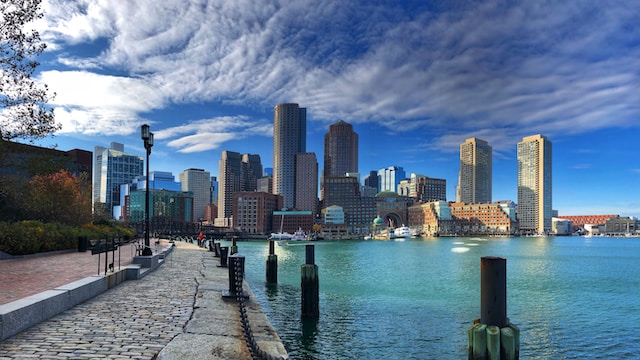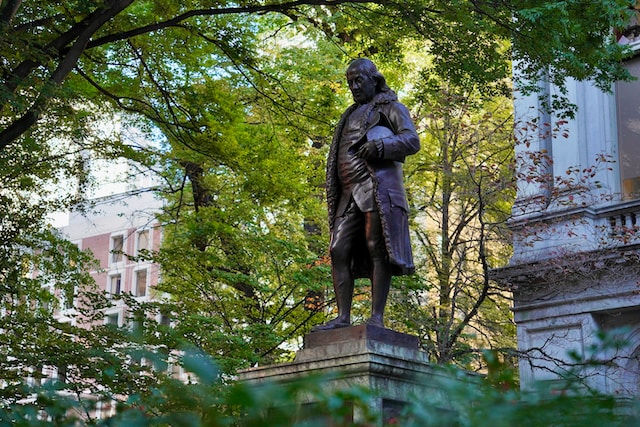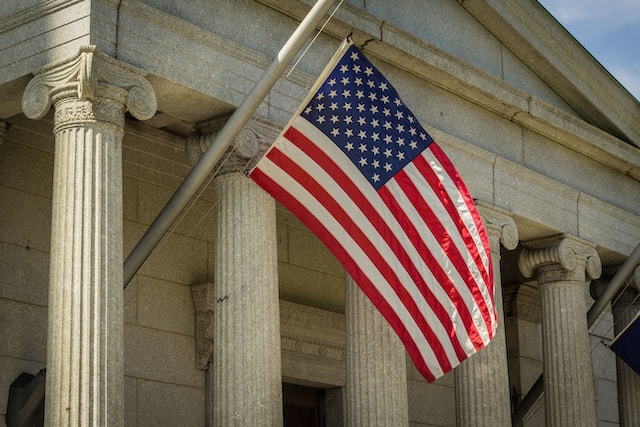
After exploring Summerville, South Carolina, my curiosity drew me toward the Northeast. My feet were itching to tread the well-worn paths of history, and Boston was calling. In Boston, the air hums with stories from hundreds of years ago. Here, the fight for freedom took center stage, and its marks still stand strong today. Excited and eager, I started my journey on the revolutionary path in Boston. This route promised a deep dive into the past, showing off iconic sites and sharing tales of bravery and change. My adventure through the heart of Boston was about to guide me through the pages of a living history book, opening my eyes to the vibrant stories that helped shape America. And that’s the story I’m sharing with you today, so buckle up!
Why Should You Explore the Revolutionary Path in Boston?
Boston’s streets are like open-air museums, each corner teeming with tales from the past. The allure of this city is undeniable. It’s not just a place to visit. It’s a place to truly experience history, making every step a walk through time. The Freedom Trail, a 2.5-mile-long path through downtown Boston, passes by 16 historically significant locations. From the Massachusetts State House to Paul Revere’s House, every site brings the American Revolution to life.

The city’s unique blend of old and new is captivating. In fact, Boston’s charm is so compelling that thoughts of making a more permanent move here often cross my mind. Imagining myself hiring movers, relocating to Cambridge, one of the most beautiful suburbs I’ve visited, and setting down roots in this historical haven seems like a dream. After all, with expert Cambridge movers at your disposal, the daunting task of relocating appears more than manageable.
The possibility of daily walks along the revolutionary path in Boston – the same paths our forefathers trod ignites a spark of excitement, deepening my connection to this city of revolution and transformation. That’s what inspired me to share my story with you!
Embarking on The Freedom Trail
My journey officially begins at the Boston Common, America’s oldest public park. It’s a sprawling green oasis in the heart of the city, a beacon of peace and history amidst urban life. Here, British troops set up camp during the Revolution, and the echoes of their presence linger as I walk across the manicured lawns under the ancient trees. The Common’s rich history sets a powerful tone for the exploration ahead.
As I continue, I reach the Massachusetts State House, its grand golden dome catching the sunlight, a beacon of freedom and democracy. Inside, I am transported back in time as I explore its historic rooms and halls. This building, filled with artifacts and timeless architecture, narrates the story of Boston’s integral role in American history. The State House stands as a testament to the enduring strength and spirit of the nation, making the past palpable and inspiring a sense of unity and pride in every visitor.
Visiting Key Revolutionary Sites
I eagerly devour countless travel stories and tips, arming myself with knowledge for the adventure that lies ahead. This preparation illuminates the path, transforming every step into a journey through the annals of time. Armed with anticipation and understanding, I dove into the exploration of key revolutionary sites in Boston.

At Paul Revere’s House
In Paul Revere’s humble abode, the air is thick with tales of his daring midnight ride. The creaking wooden floors and the preserved artifacts let me stroll through the corridors of the past. As I wander through the rooms, I sense the urgency and the whispers of rebellion, reflecting the pivotal role Revere played in the Revolution. This visit offers a tangible connection to the stories I’ve only read about, deepening my appreciation for these historical figures’ tenacity and resilience.
Old North Church
The Old North Church stands as a beacon of history. As I step inside, I am enveloped in the echoes of that fateful night when two lanterns signaled the British were coming. The air is steeped in stories of anticipation and the bravery of the patriots who changed the course of history. Exploring the church’s ancient pews and towering steeple, the events that unfolded here on April 18, 1775, come to life. It paints a vivid panorama of the past and fosters a renewed respect for the fight for freedom.
Aboard the USS Constitution
Stepping aboard the USS Constitution, I am immediately enveloped by tales of ancient battles on the high seas. The sturdy timbers and canons, remnants of victories and sacrifices, narrate stories of resilience and bravery. As the ship sways gently, I imagine the roars of battles and the determination of sailors defending freedom. Each element onboard bridges the gap between history and the present, solidifying the significance of every site visited along this revolutionary path.
Bunker Hill Monument
Upon reaching the Bunker Hill Monument, the palpable essence of heroism greets me. I climb the monument’s 294 steps, each one echoing the determination of the patriots who fought in the Battle of Bunker Hill. As I reach the top, I am greeted with a sweeping view of Boston, a modern city imbued with the spirit of the Revolution. The panorama unfurls the city’s vibrant tapestry, intertwining past and present, a silent tribute to the undying spirit of freedom.

Beyond the Trail
As I reflect on my experience, the revolutionary path in Boston feels like a vivid history book. The tales of bravery and the quest for freedom echo in my mind, making the past come alive. This journey is more than a simple visit; it’s a bridge to more exploration and adventure. Inspired, I look forward to embarking on trips to US national parks and Amtrak routes to continue this historical adventure. The stories whispered by Boston’s streets guide my way, encouraging a deeper dive into the vast, rich world around us.
 About the author:
About the author:
Meet Emily Townsend, a zealous explorer and history enthusiast. Working as a content writer at Preferred Movers Massachusetts, her narratives blend history and exploration, guiding readers through the rich tapestry of America’s past.

